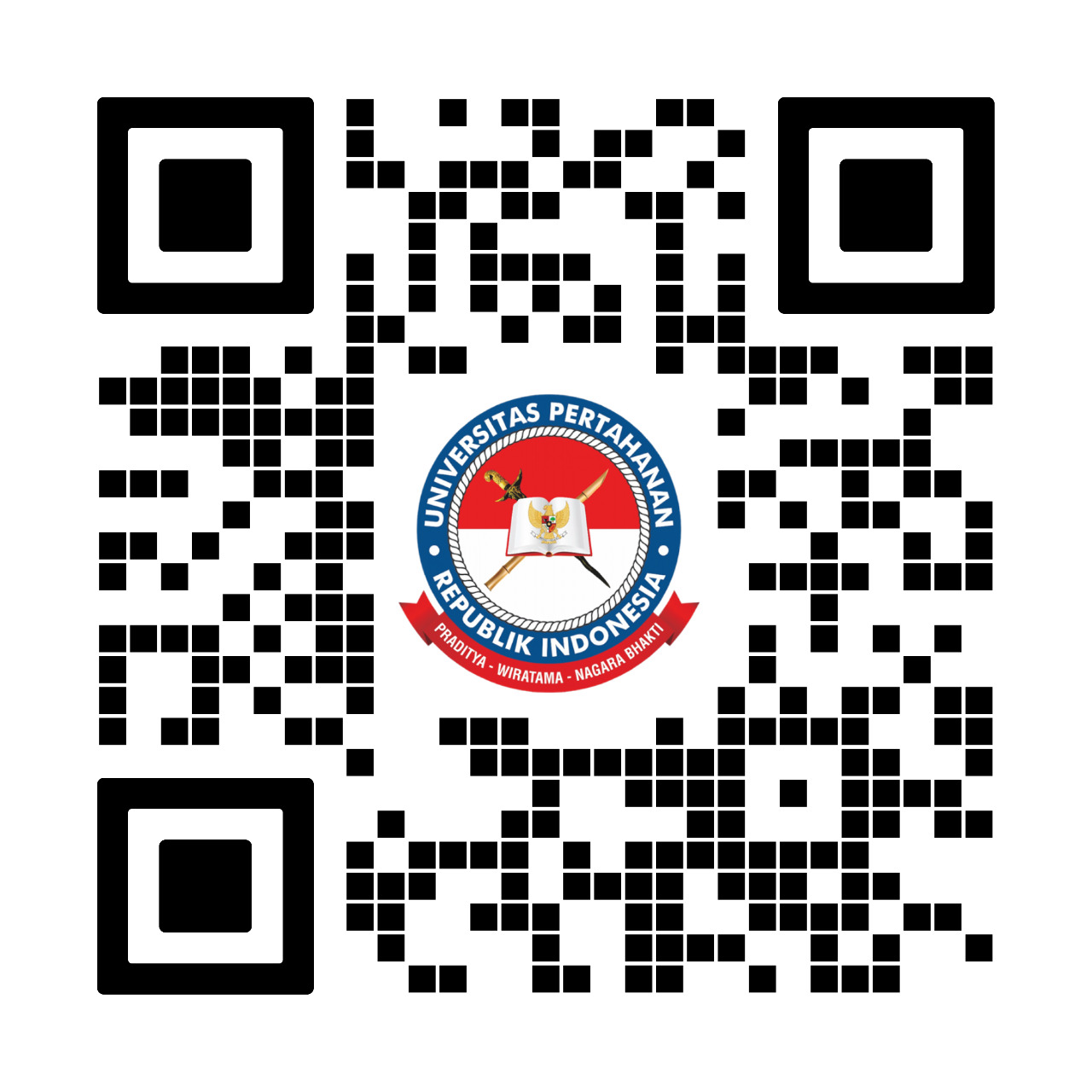The Effect of Electric Current in Hard Chrome Plating Process on the Corrosion Rate of SS400 Low Carbon Steel Plate for Warships
(1) Department of Chemistry, Republic of Indonesia Defense University, Bogor, Indonesia
(2) Department of Chemistry, Republic of Indonesia Defense University, Bogor, Indonesia
(3) Department of Chemistry, Republic of Indonesia Defense University, Bogor, Indonesia
(*) Corresponding Author
Abstract
Hard chrome plating is a technique used to protect metal from the effects of corrosion caused by the surrounding environment. The basic principle of the hard chrome plating process on metal is the reduction of chrome ions, resulting in chrome deposition on the cathode, following the principle of electrolysis. Electric current is one factor determining the quality of electroplating results. The immersion test is a correction factor for electroplating results to obtain corrosion rate values. This research used an experimental method involving one independent variable: electric current with current variations of 1 A, 2 A, 3 A, 4 A, 5 A, and 1 sample without chrome coating. In contrast, the dependent variable observed was the corrosion rate resulting from hard chrome plating. And without hard chrome plating. The controlled variable in this study was the length of soaking time for 7 days. The corrosive solution used is sodium chloride (NaCl), with a concentration of 3.5%. The research results show that the electric current resulting from hard chrome plating on SS400 steel significantly affects the results of the immersion test or corrosion rate test.
Keywords
Full Text:
PDFReferences
Alphanoda, A. F. (2016). Pengaruh Jarak Anoda-Katoda dan Durasi Pelapisan Terhadap Laju Korosi pada Hasil Electroplating Hard Chrome. Jurnal Teknologi Rekayasa, 1(1), 1–6.
American Standard Testing and Material. (1999). Standard Practice for Laboratory Immersion Corrosion Testing of Metals, Designation: G 31 – 72. In ASTM Special Technical Publication (Vol. 72, Issue Reapproved, pp. 534–544). ASTM.
Anggigi, H., Budiarto, U., & Zakki, A. F. (2019). Analisa Pengaruh Temperatur Normalizing Pada Sambungan Las SMAW (Shielded Metal Arc Welding) Terhadap Kekuatan Tarik , Tekuk dan Mikrografi Baja Karbon Rendah. Jurnal Teknik Perkapalan, 7(2), 504–513.
Ayu, G. A., Rahmayanti, D., & Nindy, E. (2015). Perhitungan Laju Korosi di dalam Larutan Air Laut dan Air Garam 3% pada Paku dan Besi ASTM A36. Gravity : Jurnal Ilmiah Penelitian Dan Pembelajaran Fisika, 1(1). https://jurnal.untirta.ac.id/index.php/Gravity/article/view/2489
Baihaqi, R. A., Pratikno, H., & Hadiwidodo, Y. S. (2020). Analisis Sour Corrosion pada Baja ASTM A36 Akibat Pengaruh Asam Sulfat dengan Variasi Temperatur dan Waktu Perendaman di Lingkungan Laut. Jurnal Teknik ITS, 8(2). https://doi.org/10.12962/j23373539.v8i2.45896
Basri, K. A. H., & Aryawan, W. D. (2019). Desain Konsep Kapal Perang Serbu Catamaran Tank Boat Dengan Sistem Penggerak Utama Turbojet Sebagai Kekuatan Pengamanan Wilayah Maritim Indonesia. Jurnal Teknik ITS, 7(2). https://doi.org/10.12962/j23373539.v7i2.33027
Brown, T. L., May, H. E. LE, Bursten, B. E., Murphy, C. J., & Woodward, P. M. (2015). Chemistry : The Central Science - Twelfth Edition. In A. Jaworski (Ed.), Pearson Prentice Hall (12th ed.). Pearson.
Harris, A., Prakoso, L. Y., & Sianturi, D. (2019). Strategi Pertahanan Laut dalam Rangka Ancaman Keamanan di Alur Laut Kepulauan Indonesia II. Jurnal Strategi Pertahanan Laut, 5(1), 15–30. https://papers.ssrn.com/sol3/papers.cfm?abstract_id=3838453
Harsimran, S., Santosh, K., & Rakesh, K. (2021). Overview of Corrosion and Its Control: a Critical Review. Proceedings on Engineering Sciences, 3(1), 13–24. https://doi.org/10.24874/PES03.01.002
Indrayani, N. L. (2016). Studi Pengaruh Ekstrak Eceng Gondok Sebagai Inhibitor Korosi Untuk Pipa Baja Ss400 Pada Lingkungan Air. Jurnal Imiah Teknik Mesin, 4(2), 47–56. http://ejournal-unisma.net
Irianty, R. S., & Khairat, D. (2013). Ekstrak Daun Pepaya sebagai Inhibitor Korosi pada Baja AISI 4140 dalam Medium Air Laut. Jurnal Teknobiologi, IV(2), 77–82.
Kurniawan, W. D., & Periyanto, P. (2019). Proses Sandblasting dan Coating Pada Kapal di PT. Dok Perkapalan Surabaya. Otopro, 13(2), 44. https://doi.org/10.26740/otopro.v13n2.p44-53
Pratama, M. Y., Budiarto, U., Jokosisworo, S., & Laboratorium Pengelasan. (2019). Analisa Perbandingan Kekuatan Tarik, tekuk, dan mikrografi Pada Sambungan Las Baja SS 400 Akibat Pengelasan FCAW (Flux-Cored Arc Welding) dengan Variasi Jenis Kampuh dan Posisi Pengelasan. Jurnal Teknik Perkapalan, 7(4), 203. https://ejournal3.undip.ac.id/index.php/naval
Purnawati, R., Jokosisworo, S., & Yudo, H. (2020). Pengaruh Salinitas Air Laut Terhadap Laju Korosi Baja SS 400 pada Kapal. Jurnal Teknik Perkapalan, 8(2), 421–430.
Rahmaniah, R., Amalia, N., & Ihsan, I. (2019). Analisis Laju Korosi Besi Beton Dengan Medium Tanah Rawa. JFT : Jurnal Fisika Dan Terapannya, 6(2), 121. https://doi.org/10.24252/jft.v6i2.11724
Sukarjo, H., & Pani, S. (2018). Pengaruh Variasi Kuat Arus Listrik dan Waktu Electroplating Nickel-Chrome Terhadap Ketebalan Lapisan pada Permukaan Baja Karbon Rendah. Jurnal ENGINE, 2(1), 18–25.
Yerikho, Raharjo, W. P., & Kusharjanta, B. (2013). Optimalisasi Variasi Tegangan Dan Waktu Terhadap Ketebalan Dan Adhesivitas Lapisan Pada Plat Baja Karbon Rendah Dengan Proses Electroplating Menggunakan Pelapis Seng. Mekanika, 11(2), 62–68.
Refbacks
- There are currently no refbacks.
 | Office Address: Faculty of Military Mathematics and Natural Sciences Republic of Indonesia Defense University Indonesian Peace and Security Center Complex, Sentul, Bogor 16810, Indonesia Email: munisi.unhanri@gmail.com | WhatsApp: +6285742313964 |

This work is licensed under a Creative Commons Attribution-ShareAlike 4.0 International License.
| Munisi: Military Mathematics and Natural Sciences View |


